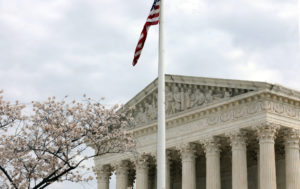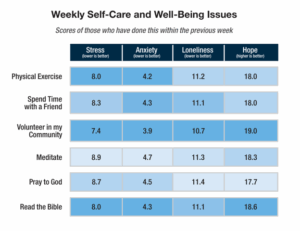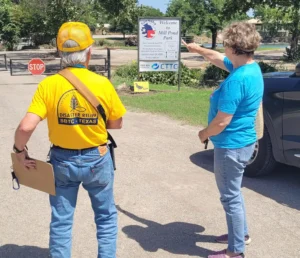
LOUISVILLE, Ky. (BP)–Beginning in Sunday school, children are taught a catchy song about Joshua and the battle of Jericho.
As the story goes, the city’s wall collapsed after Joshua and his troops marched around the city, blew their trumpets and let out a great shout.
Some scholars contend that it is simply a myth, but one Old Testament archaeologist, Bryant Wood, argues that archaeological evidence in the Palestinian region lines up precisely with the Old Testament story. Wood, an archaeologist with the Associates for Biblical Research and the editor of Bible and Spade magazine, gave a series of lectures Sept. 25-27 at Southern Baptist Theological Seminary. Wood contended that not only does archaeological evidence match the story of Jericho, but it also agrees with the biblical story of the city of Ai, which is found in the book of Joshua.
“Most scholars in the field of archaeology — and even in Old Testament studies — tend to put the findings of archaeology above what the Bible says,” he said. “So if there’s a discrepancy, they will say, ‘Well, it must be that the archaeology is correct and the Bible is wrong.’ That’s basically what you’ll read in most books – that the biblical story evidently never actually happened. It must simply be a legend or a folk tale.”
Wood, who holds to the inspiration and inerrancy of Scripture, said that the Bible should be the starting point for any archaeological expedition.
The controversy surrounding Jericho is over the date of the city’s existence and destruction. Biblical evidence would place the city’s destruction at 1400 B.C.
However, some scholars argue for a earlier date, leading them to conclude that the biblical narrative is wrong. In the 1930s, archaeologist John Garstang completed a dig at the site of the ancient city and concluded that the evidence pointed to the biblical date. Years later, British archaeologist Kathleen Kenyon examined Garstang’s findings and dated the city’s destruction at about 1550 B.C. – -some 150 years before the time of Joshua. Kenyon based her conclusions – which have established the standard academic position – on a type of pottery missing from the site.
But Wood said Kenyon’s revision of the dating was based on a superficial foundation at best.
“She based her dating not on what she actually found, but on what she didn’t find … a certain type of pottery which was not there,” he said. “So she concluded that nobody lived there [at Jericho] in the 15th century but admitted that the dig was in a poor [economically] part of town.”
Wood, an expert on certain types of pottery from this age, pointed out the unlikelihood of finding this particular type of pottery in a poorer section of the city.
Pointing to other evidence, Wood cited Joshua 6:20-24, which depicts the city as having been burned. Kenyon, he said, also found evidence of the city being burned.
Archaeological evidence also exists for the existence of Rahab’s home, Wood said. According to the Bible, Rahab and her family were the lone Jericho residents allowed to live; her house was on the city wall. Wood said German archaeologists found evidence in 1907 that is consistent with the biblical description of her house.
Wood said both Kenyon and Garstang unearthed signs of an earthquake that toppled the city walls. This order coheres with the scriptural account of Joshua in which the walls of Jericho tumbled down by an act of God.
One key find came when archaeologists discovered at Jericho clay jars filled with grain, which was a valuable commodity in this region during biblical times. Scripture places the Israelite attack on Jericho during the harvest season. The grain offers perhaps the most compelling evidence of the truthfulness of the Old Testament account, Wood said.
“Grain was valuable and was never left in the city but was plundered,” Wood said. “The Bible says God commanded the Israelites not to plunder the city but to offer it to the Lord, and they left it. The siege of the city was during harvest time, so this agrees with biblical timing.”
Regarding Ai, the controversy surrounds its location. Ai was one of the royal cities of the Canaanites. It was the second Canaanite city taken by Israel according to the account in Joshua 8.
Archaeologists of the Associates for Biblical Research [ABR] have spent many years trying to determine the controversial sites of both these ancient cities. ABR is currently excavating Khirbet el-Maqatir – a site 10 miles north of Jerusalem – as a possible location of Ai. This excavation began in 1995.
Most archaeologists, however, disagree with the conclusions of Wood and ABR and argue that Joshua’s Ai was at the present-day site of et-Tell, some six-tenths of a mile from Khirbet el-Maqatir. Excavations have revealed a city gate and wall system. ABR is continuing to excavate these features as they uncover the layout of this 15th-century B.C. Canaanite fortress, Wood said.
Wood gave two lines of evidence for placing Ai at el-Maqatir: the topographical witness found in Joshua 7-8 which is consistent with the lay of the land there, and the archaeological research which coincides with Scripture.
It is possible that two historical cities — one mentioned in Genesis, one mentioned in Joshua — could have shared the name “Ai,” he said.
“It was not uncommon for cities to move around,” Wood said.
The Bryant Wood lectures can be heard on the seminary’s web page at https://www.sbts.edu/bryantwood.html.
–30–















